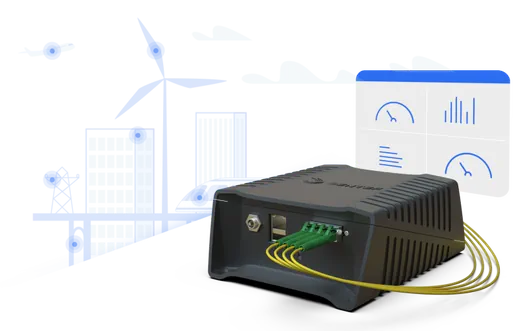FBG sensors measure a variety of parameters
Continuous monitoring to detect any change
Monitor a wide variety of parameters at multiple locations to safeguard your infrastructure against catastrophic failure and your industrial assets against unscheduled downtime.
Not just any sensor
FBG sensors outperform electrical sensors in harsh environments
Fiber optic FBG sensors are ideally suited for demanding industries. After all, they outperform electric sensors in environments with lightning strikes, extreme temperatures, … or a combination thereof.

Measure extreme temperatures

Insensitive to electro-magnetic interference

Resistant to corrosive environments

Unaffected by lightning strikes

Safe to use in explosive environments
Not just an instrument
Part of a smart ecosystem
Thanks to our interrogator, fiber optic sensors can talk seamlessly to the application software that translates your sensor data.
Interoperable with many sensors
Easy to install and integrate
High speed
data acquisition
Small form factor
Cost-effective
Want to know how our interrogators can help you?
Our sales engineers will help you get started.

